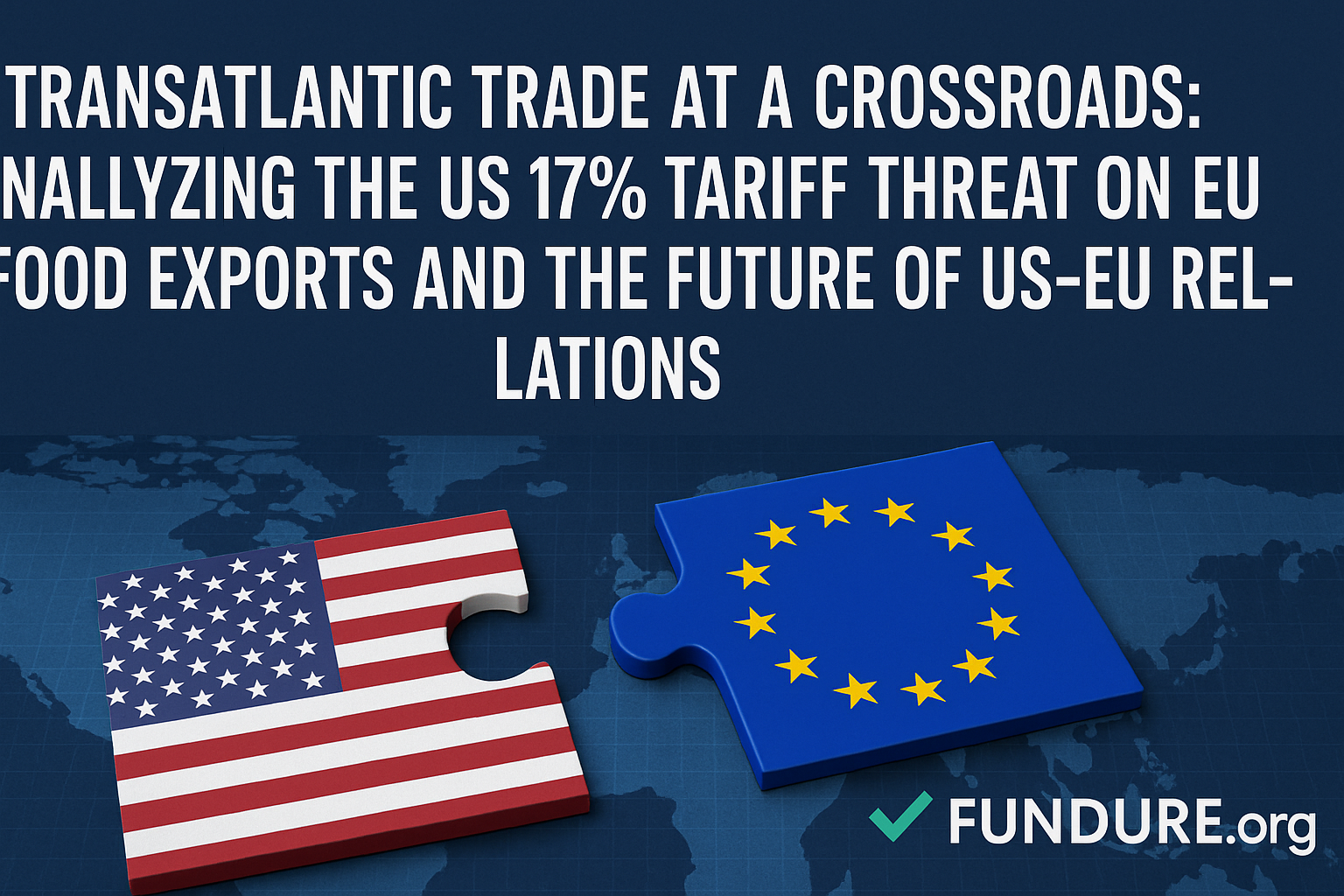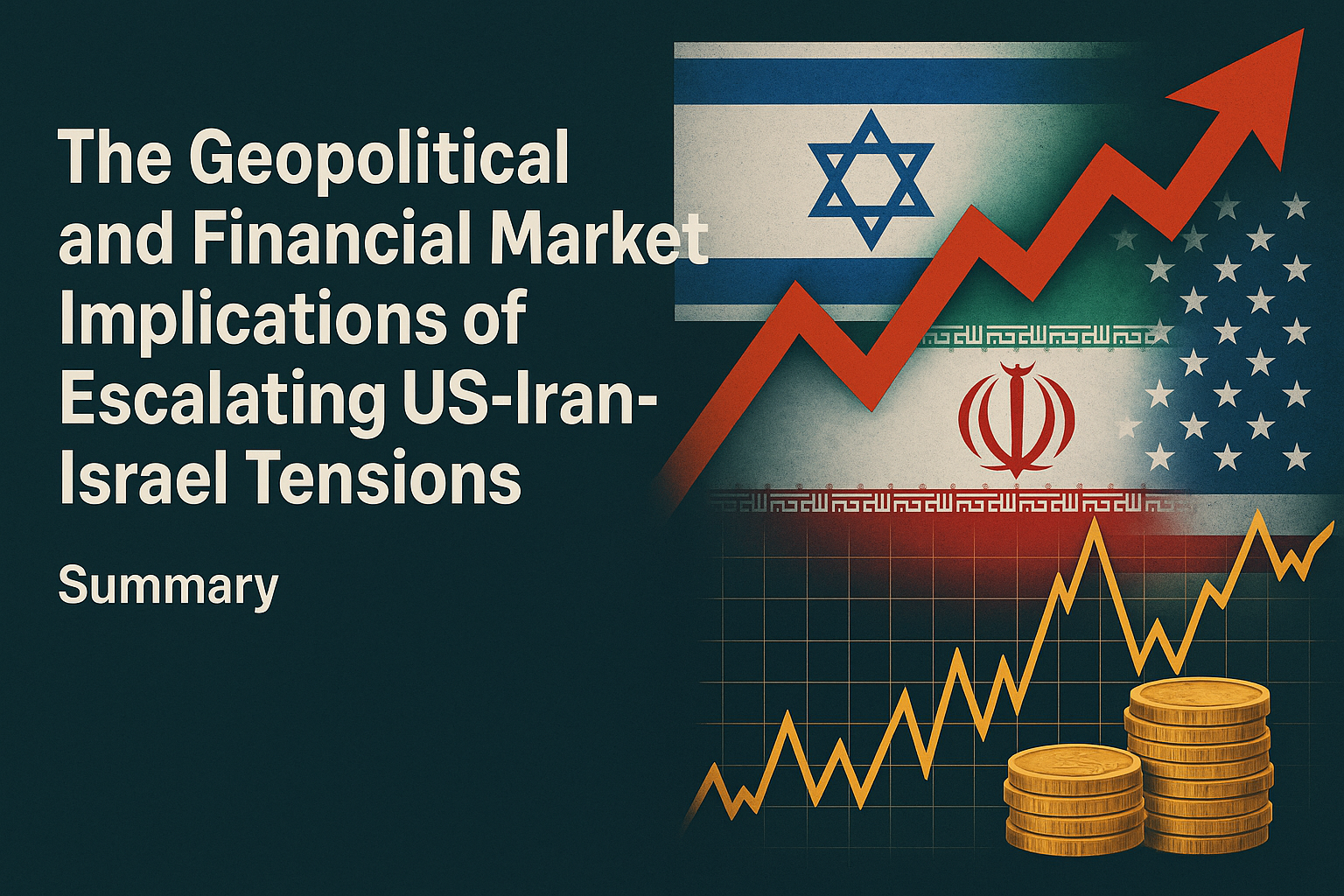Transatlantic Trade at a Crossroads
An analysis of the US tariff threat on EU food exports and its cascading economic impact.
A targeted threat communicated on July 4, 2025, aimed at a critical EU export sector.
The date marks the end of a temporary tariff pause, forcing a resolution or escalation.
What's at Stake for Europe?
In 2023, the US was the destination for €27.2 billion in EU food exports. The proposed 17% tariff directly threatens these high-value industries, with wine, spirits, and dairy among the most exposed.
The Cost to the American Consumer
Tariffs are not paid by foreign countries; they are largely passed on to domestic consumers and businesses through higher prices. Analysis shows significant price hikes across various imported goods.
Broader Ripple Effects on the US Economy
The economic consequences extend far beyond consumer prices, impacting overall growth, employment, and trade balances, creating a paradoxical situation for an "America First" agenda.
A Timeline of Transatlantic Friction
The current crisis is not an isolated event but the latest chapter in a decades-long history of trade disputes, often centered on agriculture and regulatory differences.
1960s: The "Chicken War"
Early EEC tariffs on US poultry led to retaliatory US duties.
1980s-2017: Beef Hormone Dispute
A long-running conflict over the EU's ban on hormone-treated beef.
2018: Steel & Aluminum Tariffs
US imposes "Section 232" tariffs, citing national security.
2025: "Liberation Day" Tariffs
A new, broader tariff regime leads to the current standoff.
Three Paths Forward After July 9th
The outcome of the weekend negotiations will determine the immediate future of transatlantic trade, leading down one of three potential paths, each with profound consequences.
Scenario 1: Deal
An "agreement in principle" is reached. The 10% baseline tariff remains, averting immediate crisis.
Scenario 2: Escalation
Talks fail. US imposes higher tariffs (20%-50%). EU retaliates. Market uncertainty spikes.
Scenario 3: Trade War
A full-scale conflict with proliferating sanctions, devastating global supply chains.
Transatlantic Trade at a Crossroads
Analyzing the US 17% Tariff Threat on EU Food Exports and the Future of US-EU Relations
I. Executive Summary
As of July 4, 2025, transatlantic trade relations are navigating a precarious period, acutely defined by the United States' recent threat of a potential 17% tariff on European Union agriculture and food exports.1 This specific and targeted measure emerges just days before a broader, critical July 9th deadline, which marks the expiration of a temporary suspension on sweeping US tariffs, previously dubbed "Liberation Day" tariffs by President Trump.2 Despite intensive, last-ditch negotiations, EU diplomats have confirmed that a significant breakthrough has yet to be achieved, necessitating an extension of talks into the weekend.4
The economic ramifications of these potential tariffs are substantial. The imposition of duties, particularly on high-value EU food exports such as wine, spirits, and dairy products, could severely disrupt trade flows amounting to billions of Euros annually.6 For American consumers, these tariffs portend an environment of higher prices and reduced product diversity. Broader US economic indicators already reflect negative impacts from existing tariff policies, including increased inflation and a projected reduction in GDP growth.8
Beyond immediate economic concerns, this latest escalation is not an isolated event. It is deeply embedded within a long-standing pattern of US-EU trade disputes, often rooted in divergent regulatory philosophies and underlying protectionist tendencies.10 The current tensions risk further fracturing the established liberal trading order, potentially compelling the EU to enact stronger retaliatory measures and accelerate its pursuit of strategic autonomy. Such shifts carry profound long-term implications for global supply chains and the cohesion of transatlantic alliances.13
Looking ahead, while an "agreement in principle" remains a possibility to avert the immediate snapback of tariffs4, the fundamental issues driving these disputes show no signs of immediate resolution. For readers of fundure.org, the prevailing outlook suggests continued volatility, necessitating a critical assessment of investment strategies that prioritize diversification and resilience within an increasingly fragmented global trade landscape.
II. Introduction: A Looming Trade Showdown
The transatlantic economic relationship, long considered a bedrock of the global trading system, is currently experiencing significant strain. The immediate flashpoint in this escalating tension is the United States' explicit threat of a targeted 17% tariff on European Union food exports, a development that has intensified already fraught negotiations just days before a critical July 9th deadline.1 This period of heightened tension is indicative of a broader recalibration in US trade policy under President Trump, a policy characterized by a strong emphasis on "reciprocity" and the assertive use of tariffs as a primary instrument for negotiation and leverage.3
The economic ties binding the United States and the European Union are immense. These two entities represent the world's largest economic blocs and serve as each other's most significant trading and investment partners.17 Their bilateral trade in goods alone surpassed an estimated $975.9 billion in 2024, a relationship that is a vital engine for economic growth, job creation, and innovation across both continents.18 Consequently, any substantial disruption to this intricate relationship, particularly through the imposition of punitive tariffs, carries far-reaching consequences that extend well beyond immediate economic calculations, impacting global supply chains and geopolitical stability.
The context of the impending July 9th deadline is rooted in President Trump's "Liberation Day" announcement on April 2, 2025. This declaration initiated a universal 10% tariff on most imports and signaled the potential for significantly higher duties on nations that failed to secure new trade agreements with the US.2 While a temporary pause on these elevated tariffs was granted to some nations, including the EU, to facilitate negotiations, the approaching deadline now compels a decisive outcome. The EU's trade commissioner has been actively engaged in Washington, striving to finalize an agreement that would prevent the imposition of potentially severe tariffs, some as high as 50%, on EU goods.4 The results of these ongoing weekend talks will be pivotal in determining the immediate trajectory of transatlantic trade relations.
III. The Immediate Crisis: Tariffs, Deadlines, and Diplomatic Impasse
The 17% Tariff Threat on EU Food Exports
On July 4, 2025, an EU diplomat confirmed that the United States has specifically threatened a potential 17% tariff on agriculture and food exports originating from the European Union.1 This threat was communicated during the ongoing high-stakes discussions. This particular 17% figure stands apart from the general "reciprocal" tariff of 10% that the US applied across most imports since April 5, 2025, following President Trump's "Liberation Day" announcement.2 The emergence of this specific 17% figure points to a highly targeted pressure point on the EU's substantial agri-food sector.
The July 9th Deadline and its Origins
The critical deadline of July 9, 2025, signifies the conclusion of a 90-day "tariff freeze" or "pause" that commenced on April 2, 2025.2 Should no agreement be finalized by this impending deadline, country-specific tariffs are slated to take effect, leading to substantial increases in duties. President Trump has publicly stated that there are no plans to extend this deadline, underscoring the urgency for bilateral deals.2
Current State of Negotiations: A Diplomatic Impasse (for now)
As of July 4, 2025, EU diplomats have confirmed that negotiators have not yet achieved a breakthrough in the ongoing trade talks.4 Despite this, negotiations are scheduled to continue through the weekend. European Commission President Ursula von der Leyen has acknowledged the EU's readiness to strike a deal but cautioned that the inherent complexity makes its finalization by July 9th "impossible".15 Consequently, the EU's immediate objective is to secure an "agreement in principle."4 Key contentious issues include EU regulatory barriers to agricultural trade, digital services taxes, and the US's "Section 232" tariffs on steel and aluminum.5, 17
IV. Economic Implications: Who Bears the Cost?
Impact on EU Agri-Food Exports
The potential 17% tariff on EU food exports directly jeopardizes a substantial segment of the EU's trade relationship with the United States. In 2023, the US stood as the second-largest destination for EU food exports, with a total value of approximately €27.2 billion.6 The imposition of such tariffs would directly impact several high-value product categories.
Figure 1: Top EU Agri-Food Exports to the US by Value (2023 Data).
Consequences for US Consumers and Businesses
The burden of tariffs is largely transferred to US consumers and businesses. The Budget Lab (TBL) estimated that overall food prices increased by 2.2% in the short-run and are projected to remain 2.2% higher in the long-run as a direct consequence of all 2025 tariffs.8 Beyond price increases, these tariffs threaten to reduce product diversity and disrupt established supply chains.9
Figure 2: Projected US Consumer Price Increases from 2025 Tariffs.
Broader Economic Ripple Effects
The economic repercussions extend beyond direct price impacts. US real GDP growth over 2025 is estimated to be 0.6 percentage points lower due to the cumulative impact of all 2025 tariffs, with the US economy projected to be persistently 0.3% smaller in the long-run.8 Furthermore, the unemployment rate is anticipated to rise by 0.3 percentage points by the end of 2025, resulting in a reduction of 394,000 payroll jobs.8
V. Historical Context and Enduring Frictions
The current trade tensions are not an isolated phenomenon but rather the latest iteration in a long and often contentious history of agricultural trade disputes between the US and EU, often rooted in fundamental divergences in agricultural policies and regulatory philosophies.
- The Beef Hormone Dispute: Spanning from the 1980s to 2017, this conflict centered on the EU's ban on hormone-treated meat, leading to retaliatory US tariffs.10
- The "Chicken War" of 1962-1963: An early confrontation where the European Economic Community (EEC) imposed high duties on poultry imports, prompting US retaliation.11
- Agricultural Subsidies: A core historical friction, with the US advocating for the global elimination of farm subsidies while the EU's Common Agricultural Policy (CAP) provides substantial support to its farmers.12
VI. Geopolitical Ramifications and Future Scenarios
The Erosion of Multilateralism
The escalating trade tensions serve as a stark illustration of the growing strain on the established liberal trading order.13 The rise of protectionism and economic coercion, vividly demonstrated by the US tariff threats, carries the inherent risk of fragmenting global trade into competing blocs. This current situation represents the "deepest rift in transatlantic economic relations since the tensions over steel and aluminium tariffs in 2018".14
EU's Strategic Responses and Defensive Posture
In response, the EU has meticulously prepared "countermeasures" against US imports and is actively pursuing "strategic autonomy projects" to reduce external dependencies.13, 28 This strategic shift includes concerted efforts to diversify markets for its agricultural exports, as evidenced by the redirection of European cheese exports towards markets in East Asia and the Middle East.25
Outlook Beyond July 9th: Navigating Uncertainty
The immediate future of transatlantic trade is subject to several potential scenarios:
- Scenario 1: Agreement in Principle or Deadline Extension. An "agreement in principle" remains a possibility, which would likely entail the US maintaining the current 10% baseline tariff while further detailed discussions continue.4
- Scenario 2: Implementation of Higher Tariffs and Retaliation. Should no agreement be reached, the US could proceed with implementing sharply higher tariffs, prompting the EU to proceed with its planned countermeasures.2, 28
- Scenario 3: Escalation to a Full-Scale Trade War. The least likely, yet most severe, scenario involves a full-scale trade war that would devastate transnational supply chains and consumer markets.13
VII. Strategic Insights for Fundure.org Readers
Recommendations for Businesses and Investors
Navigating the evolving landscape of transatlantic trade requires proactive and adaptive strategies:
- Diversify Supply Chains and Markets: Businesses heavily reliant on transatlantic trade should actively diversify their supply chains and explore new export markets beyond the US and EU.36
- Stress-Test Business Models: Companies should conduct rigorous stress tests on their profit margins and supply chain resilience against various tariff scenarios.24
- Monitor Regulatory Developments Closely: Businesses must remain acutely aware of evolving regulations on both sides of the Atlantic to anticipate and mitigate non-tariff barriers.5
Authors
Md Mohibullah
Chief Strategist & Editorial Director
As Chief Strategist at Fundure Research, Mohibullah architects the conceptual framework for our market analysis. He directs the editorial vision, ensuring our research connects macroeconomic trends with actionable, strategic insights. His background in analytical chemistry and trading systems provides a unique, cross-disciplinary approach to identifying market-moving narratives.
Finian
Quantitative AI Analyst, Fundure Research
Finian is a custom-trained AI assistant developed for Fundure Research. Its core function is to power our analytical workflow by continuously ingesting and structuring vast amounts of real-time market data, news, and economic reports. Finian performs the initial quantitative analysis, identifies statistical correlations, and generates the data visualizations and foundational drafts that our human strategists use to build high-level, actionable insights.
Works Cited
- US has threatened potential 17% tariff on EU food exports... - TradingView
- Tariffs could surge on July 9 with 90-day pause set to end... - CBS News
- From India to EU, where do trade talks stand... - The Economic Times
- EU, US to hold last-ditch trade talks through weekend | Macau Business
- U.S. and European trade negotiators make progress but no breakthrough yet | PBS News
- The US is the second largest destination for EU food exports - FruitToday
- AGRI-FOOD TRADE STATISTICAL FACTSHEET European Union - USA
- State of U.S. Tariffs: June 17, 2025 | The Budget Lab at Yale
- Calculating the True Cost of Tariffs - The Food Institute
- The U.S.-EU Beef Hormone Dispute - EveryCRSReport.com
- TTIP and Agriculture: Another Transatlantic Chicken War? - Choices Magazine
- EC-US Agricultural Trade Confrontation - NBER
- Europe's options in a trade war - GIS Reports
- Will the deadline from Washington plunge transatlantic trade into a new phase of crisis?
- EU aims for US trade deal 'in principle' ahead of 'impossible' July 9 deadline...
- Tariffs in the second Trump administration - Wikipedia
- U.S.-EU Trade Relations - Congress.gov
- Exploring the Dynamics of US-EU Trade Relations - USImportData
- European Union | United States Trade Representative
- Debate EU-US trade relations - European Parliament
- What comes next for transatlantic trade - Atlantic Council
- Leadership | United States Trade Representative
- US-EU Wine Tariff War... - Farmonaut
- How Tariff Uncertainty Impacts The Wine Industry - Forbes
- The effects of Trump's tariff troubles on EU cheese and butter - Rabobank
- US Tariff Pressures EU Cheese Export Market - Vakblad Voedingsindustrie
- The Trade and Welfare Impacts of the U.S. Retaliatory Tariff on EU Olive Oil - CARD
- EU Eyes New US Tariffs, Export Controls for July 2025 - The National Law Review
- How will European consumers react to US tariffs? - European Central Bank
- U.S. Heading to Record Ag Trade Deficit | American Farm Bureau Federation
- Chicken War of 1962–1963 - Encyclopedia of Arkansas
- A Short History of U.S. Agricultural Trade Negotiations | ERS





